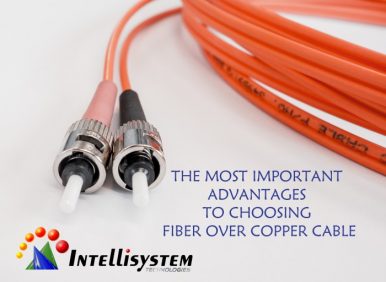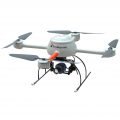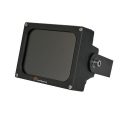
(English) THE MOST IMPORTANT ADVANTAGES TO CHOOSING FIBER OVER COPPER CABLE
It is well known that Fiber optic cable is one of the most popular mediums for both new cabling installations and upgrades, including backbone, horizontal, and even desktop applications. Fiber offers countless advantages over copper.
Reported below I will try to classify this vantages in only few points that are the most representative:
- Greater bandwidth
Fiber provides more bandwidth than copper and has standardized performance up to 10 Gbps and beyond (experimentally car reach to 100 GB). More bandwidth means fiber can carry more information with greater fidelity than copper wire. Keep always in mind that fiber speeds are dependent on the type of cable used. Single-mode fiber offers the greatest bandwidth and no bandwidth requirements compared to the multi-mode one.
- Speed and distance
Due to the fiber optic signal nature made of light, very little signal loss occurs during transmission, and data can move at higher speeds and greater distances (theoretically at the light speed). Fiber does not have the copper’s 100-meter (328-ft.) distance limitation of unshielded twisted pair copper (without a booster). Fiber distances depend of the cable quality, wavelength and network. Distances can range from 550 meters (984.2 ft.) for 10-Gbps multi-mode and up to 40 kilometers (24.8 mi.) for single-mode cable. The majority of backbones in large companies are fiber.
- Security
The data transmitted over the fiber are always safe. It doesn’t radiate signals and is extremely difficult to tap. If the cable is tapped, it’s very easy to monitor because the cable leaks light, causing the entire system to fail. If an attempt is made to break the physical security of your fiber system, you’ll know it. Take in account that there are many different application that use the fiber as intrusion detection system exploiting the just mentioned properties.
Fiber networks also enable you to put all your electronics and hardware in one central location, instead of having wiring closets with equipment throughout the plant.
- Immunity and reliability
Fiber provides extremely reliable data transmission. It’s completely immune to many environmental factors that affect copper cable typically caused electromagnetic interference. The fiber’s core is made of glass, which is an insulator, so no electric current can flow through. It’s immune to electrometric interference and radio-frequency interference (EMI/RFI), crosstalk, impedance problems, and more. You can run fiber cable next to Oil&Gas industrial equipment without worry. Fiber is also less susceptible to temperature fluctuations than copper and can be submerged in water. Fiber is the ideal choice for Oil&Gas application both inshore and offshore.
- Design
Fiber is lightweight, thin, and more durable than copper cable. To get higher speeds using copper cable, you need to use a higher grade of cable, which typically have larger outside diameters, weight more, and take up more space in cable trays. With fiber cable, there is very little different in diameter or weight. Plus, fiber optic cable has pulling specifications that are up to 10 times greater than copper cable (depending on the specific cable). Its small size makes it easier to handle, and it takes up much less space in cabling ducts. And, fiber is easier to test than copper cable.
- Migration
The proliferation and lower costs of media converters are making copper to fiber migration much easier. The converters provide seamless links and enable the use of existing hardware. Fiber can be incorporated into network in planned upgrades by simply using the adequate copper to fiber converters.
- Field termination.
Although fiber is still more difficult to terminate than copper, advancements in technology have made terminating and using fiber in the field easier. Terminating fiber optic cable is not as simple as copper. While manufacturers have developed crimp-on connectors, they are expensive, high loss and have not been very reliable. Fiber optic connectors need adhesives for reliability and low cost. And most installation involves stripping fibers, injecting adhesives and polishing the ends. No IDC (insulation displacement connectors) here. Any good installer can learn how to terminate fiber in less than 2 hours.
- Cost
The cost for fiber cable, components, and hardware has steadily decreased. Overall, fiber cable is more expensive than copper cable in the short run, but it may be less expensive in the long run. Fiber typically costs less to maintain, has less downtime, and requires less networking hardware. In addition, advances in field termination technology has reduced the cost of fiber installation as well.



 English
English



 RSS - Articoli
RSS - Articoli
You must belogged in to post a comment.